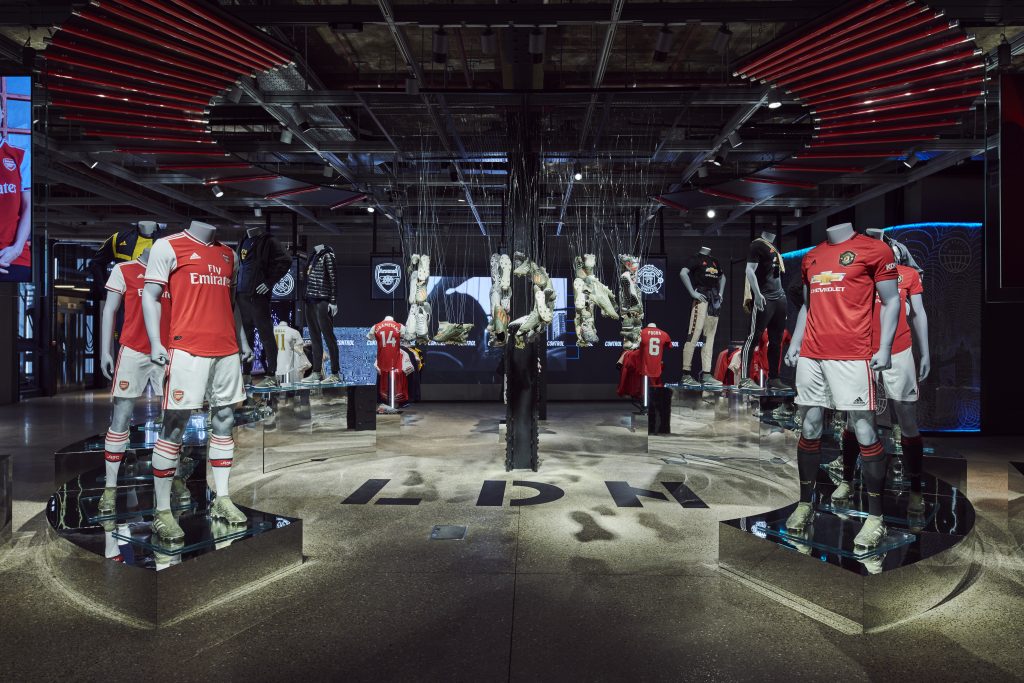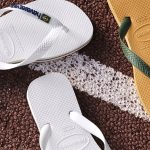Adidas CEO Bjørn Gulden said the first quarter ended a little better than expected as the company eked out flattish sales growth globally and a small operating profit despite the termination of the Yeezy business. Gulden said sales were up 9 percent for the quarter ended March 31 when excluding the Yeezy business. The impact on the North America business was far more impactful, with Yeezy contributing 75 percent of the 20 percent sales decline in the region, particularly in the company’s DTC e-commerce business.
“We are very happy to see our Performance categories continue to develop well and grow strongly,” Gulden suggested. “The decline in Lifestyle and the loss of Yeezy are of course hurting us. But also here we see some positive developments: The Terrace segment is doing very well in all markets and we have started to scale up volumes for our Samba, Gazelle and Campus franchises. Our partnership launches with Bad Bunny, Ronnie Fieg/Kith and Gucci have performed great. And the reaction from consumers and retailers to our Fear of God launch in April was incredible.”
Overall currency-neutral revenues were said to be flat in the first quarter of 2023 versus the prior-year comp period. The top-line in Q1 was impacted by significantly reduced sell-in to the wholesale channel as part of the company’s initiatives to reduce high inventory levels, particularly in North America and Greater China. In addition, the discontinuation of the Yeezy business weighed on the top-line development during the quarter, representing a drag of around €400 million on the year-over-year comparison, mainly across the North America, Greater China and EMEA regions.
Despite this significant drag, footwear revenues grew 1 percent during the quarter, reflecting the strong momentum the Adidas brand is enjoying in its Performance categories football, running, outdoor, and tennis. Apparel sales declined 3 percent in the first quarter as this product division is particularly impacted by the high inventory levels in the marketplace and the company’s disciplined sell-in approach in response to it. Accessories grew 8 percent during the quarter driven by strong growth in football.
Lifestyle revenues were said to be down during the quarter despite extraordinary demand for the company’s Samba, Gazelle and Campus franchises. These products are at the core of the current Terrace sneaker trend and have been benefiting strongly from it. While Adidas continued to limit the supply at the beginning of the year, the company is slowly starting to scale its offering as the year progresses. Sales in the Adidas Performance categories continued to grow at a strong double-digit rate. This growth reflects the successful launch of the latest product innovations such as the jerseys for the FIFA Women’s World Cup 2023, the latest iteration of the iconic Predator football boot, the Adizero family of running products and the Free Hiker outdoor franchise.
In euro terms, the company’s revenues declined 1 percent to €5.27 billion in the first quarter compared to €5.30 billion in the year-ago period.
From a channel perspective, currency-neutral sales in the Wholesale business grew 3 percent, driven by strong growth in EMEA, Asia-Pacific and Latin America. Direct-to-consumer (DTC) revenues declined 7 percent versus the prior-year first quarter. This reflects the adverse Yeezy impact on the company’s e-commerce business (-23 percent) as the vast majority of this product used to be sold through Adidas’ owned-online channel. At the same time, sales in the company’s owned-retail stores increased 11 percent in the first quarter.
Currency-neutral sales in North America declined 19.6 percent (-16.1 percent in Euro terms) to €1.17 billion in the first quarter as the region is particularly affected by the discontinuation of the Yeezy business. In addition, significantly reduced sell-in to the Wholesale channel as a result of high inventory levels in the market weighed on top-line growth.
While total revenues in Greater China declined 9.4 percent currency-neutral to €884 million in Q1, the sell-out of the company’s products increased year-over-year, as reflected in double-digit growth across Adidas’ owned-retail stores.
Sales in EMEA grew 4.0 percent currency-neutral to €2.00 billion, driven by high-single-digit growth in Wholesale.
Revenues in Asia-Pacific and Latin America both continued to increase at double-digit rates, with Asia-Pacific up 15.6 percent in the quarter to €567 million and Latin America growing 48.7 percent to €595 million, driven by strong growth in both Wholesale and DTC.
“Great double-digit growth in Latin America and Asia-Pacific, and slight growth in EMEA despite Russia were in line with our plan,” Gulden shared. “Total revenues in Greater China were still down 9 percent, but we achieved double-digit sell-out growth. This was better than expected and makes us optimistic for the rest of the year. The 20 percent sales decline in North America, down 5 percent excluding Yeezy, was in line with our conservative sell-in strategy due to the high levels of inventory and discounts in the market.”
The company’s first-quarter gross margin was down 5.1 percentage points to 44.8 percent of sales, mainly driven by the increase in supply chain costs as well as higher discounting in the marketplace. In addition, inventory allowances, the adverse Yeezy impact and negative currency developments weighed on the gross margin development. Adidas said this could not be offset by the significant positive effect of the price increases the company has implemented.
Other operating expenses were up 4.8 percent to €2.37 billion. As a percentage of sales, other operating expenses increased 2.3 percentage points to 44.9 percent of sales. Marketing and point-of-sale expenses decreased 6.3 percent to €601 million, or 11.4 percent of sales. Operating overhead expenses were up 9.2 percent to €1.77 billion, mainly driven by higher logistics and IT costs. As a percentage of sales, operating overhead expenses increased 3.0 percentage points to 33.5 percent. The company’s operating profit amounted to €60 million in Q1 versus €437 million in the year-ago quarter, reflecting an operating margin of 1.1 percent compared to 8.2 percent of sales in Q1 2022.
After taxes, the company’s net loss from continuing operations amounted to €24 million versus net income from continuing operations of €310 million in the year-ago quarter, while basic EPS from continuing operations posted a loss of €0.18 per share compared to a profit of €1.60 a share in Q1 last year.
Turning to the balance sheet, Inventories at quarter-end increased 24.9 percent year-over-year to €5.68 billion. On a currency-neutral basis, inventories grew 27 percent compared to the prior year, reflecting sequential improvements across all regions. Operating working capital was up 38 percent to €6.39 billion. On a currency-neutral basis, operating working capital grew 41 percent. Average operating working capital as a percentage of sales increased to 26.0 percent from 20.4 percent of sales last year. This development was said to reflect the inventory increase as well as a double-digit decrease in payables due to lower sourcing volumes in line with the company’s activities to reduce elevated inventory levels.
“Inventories are still too high, but already €300 million lower than at the beginning of the year,” said Gulden. “We continue to work hard to normalize our inventory levels during the year. This is crucial for us to be able to lower discount levels, increase our full price business and re-build brand heat again.”
Looking ahead, Adidas continues to expect 2023 full-year currency-neutral revenues to decline at a high-single-digit rate as macroeconomic challenges and geopolitical tensions persist. Elevated recession risks in North America and Europe as well as uncertainty around the recovery in Greater China continue to exist. The company’s revenue development will also be impacted by the initiatives to significantly reduce high inventory levels. In addition, while the company continues to review future options for the utilization of its Yeezy inventory, it says the guidance reflects the revenue loss of around €1.2 billion from potentially not selling the existing stock. Accounting for the corresponding negative operating profit impact of around €500 million, the company’s underlying operating profit is projected to be around the break-even level in 2023.
Should the company irrevocably decide not to repurpose any of the existing Yeezy product going forward, it would reportedly result in the potential write-off of the existing Yeezy inventory and would lower the company’s operating profit by an additional €500 million this year. In addition, Adidas expects one-off costs of up to €200 million in 2023. These costs are part of the company’s ongoing strategic review aimed at reigniting profitable growth as of 2024. If all these effects were to materialize, the company expects to report an operating loss of €700 million in 2023.
















